
 “This is where we have got to with government-engineered breakneck population growth that also puts property developers and associated professions in charge of planning. 110 golf-courses, which occupy green, treed spaces, in all kinds of areas in Melbourne and its suburbs and another 374 in Victorian regions, now carry hugely increased potential resale value if speculators can get them rezoned for more intensive use. Predictably, golf-course owners and probably management committees are now complaining that they aren’t making enough money. Some of their complaints will be well-founded, because state-imposed population pressure has caused demand for land, water and power, hence their costs, to rise rapidly. If nothing is done, either to reduce population growth, or exempt golf-courses from paying these charges, they will skyrocket.” (Sheila Newman, Population, environment and land-tenure systems sociologist.)
“This is where we have got to with government-engineered breakneck population growth that also puts property developers and associated professions in charge of planning. 110 golf-courses, which occupy green, treed spaces, in all kinds of areas in Melbourne and its suburbs and another 374 in Victorian regions, now carry hugely increased potential resale value if speculators can get them rezoned for more intensive use. Predictably, golf-course owners and probably management committees are now complaining that they aren’t making enough money. Some of their complaints will be well-founded, because state-imposed population pressure has caused demand for land, water and power, hence their costs, to rise rapidly. If nothing is done, either to reduce population growth, or exempt golf-courses from paying these charges, they will skyrocket.” (Sheila Newman, Population, environment and land-tenure systems sociologist.)
After a 2017 discussion paper that not many of us heard about, the Department of Environment, Land, Water and Planning, has again discreetly invited people to provide feedback to draft guidelines for their Golf Course Redevelopment Standing Advisory Committee, which is composed of property development industry professionals

SUBMISSION IN RESPONSE TO PROPOSAL FOR GOLF-COURSE REDEVELOPMENT
by Sheila Newman, Population, environment and land-tenure systems sociologist.[1]
Redeveloping golf courses and land-speculation:
This is where we have got to with government-engineered breakneck population growth that also puts property developers and associated professions in charge of planning. 110 golf-courses, which occupy green, treed spaces, in all kinds of areas in Melbourne and its suburbs and another 374 in Victorian regions, now carry hugely increased potential resale value if speculators can get them rezoned for more intensive use. Predictably, golf-course owners and probably management committees are now complaining that they aren’t making enough money. Some of their complaints will be well-founded, because state-imposed population pressure has caused demand for land, water and power, hence their costs, to rise rapidly. If nothing is done, either to reduce population growth, or exempt golf-courses from paying these charges, they will skyrocket.
Outrageous:
The proposal is outrageous, of course. It is outrageous in scale, in potential irreversibility, in lack of statistics, and in lack of adequate notification[2] of all Australians that something so huge is in train. If a government can provide wide, ongoing promotion of the dangers of bowel cancer, it could have reached more people on this.
It is also outrageous in the impossibility of most Victorians to find the time to contextualise, assess, and reply to the proposal, even if they knew about it.
It is notably shocking in its potential costs to environmental quality and diversity for all Australians.
It is especially outrageous in its potential strategic profit-grabbing by the property development and construction industry, which has positioned itself with government to generate focused benefits in demand from the massive population-growth engineering it has lobbied for so successfully and undemocratically. In the game of mates, the property developers and the state government (which has become dependent on stamp-duty[3] in lieu of a real economy) are organised to receive the focused benefits, but the public will pay – and not just in dollars - the diffuse costs of this massive expansion and intensification.[4]
This proposal, which flags a copious series of case-by-case fights over rezoning golf-courses for development, is a fine example of the kinds of diffuse and hard to identify costs that the public will bear if this goes ahead. The proposal would require Melbourne’s increasingly socially precarious population, already severely stressed by constant change, to endlessly monitor what is happening to golf courses along with all the other continuous development.
We should have the ability to reject out of hand such proposals all at once, in a job lot.
We should not be expected to devote our lives to fighting to keep what we have, against people who are supposed to be protecting it on our behalf.
Who, except developers, who are networked, resourced and organised at national, state and local level, could find out where all the golf-courses are and then attend, in person or by proxy, all the hearings and reviews, and engage in all the processes, that a Golf Course Redevelopment Standing Advisory Committee would apply to each of them? Who else could afford to do this? Who else controls the process?
Over-commodification:
On the technical side, these ‘planning guidelines’ lack adequate recognition or an overview of the huge natural benefits of relatively undeveloped land. Golf courses have important uses other than golf – as habitat for birds and other fauna, for climate stability, and for the green relief they provide from densely populated spaces. I personally prefer natural landscapes with native plants and animals to golf-courses, and I prefer landscape painting and bird-watching to golfing. Nonetheless, I can see that golf courses are much better for ecology and environment than buildings, roads, and other intensified land-uses. Melbourne, which was planned with large avenues and many green spaces, now lacks green spaces and is choked with traffic. Unfinancial golf-courses, if they cannot be made financial (see further on) should be returned to nature, to provide scarce habitat to our native animals and contact with nature for humans. These golf-courses often got by on the pretext that they would preserve open land and some habitat in the form of golf courses, as a trade-off for more development. “Since 2000 around over 10 new golf courses have been established as the centrepiece of high-end residential developments in Victoria.”[5] No surprise if they want to develop it now.
Golf courses per capita and Victoria’s population juggernaut:
Given that the Victorian Government intends to keep inviting people to come and live and work in Victoria, anticipating doubling and redoubling of the population, if Victoria has more golf-courses per capita than other states, it will need them, for golf or for return to nature.
Birds:
The situation is particularly dire for birds – they really need golf-courses. Australia is a land of birds; we have the most extraordinary range. Doesn’t anyone in planning know of our amazing evolutionary history? It is world famous! The majority of the world’s bird species started here, notably perching birds[6] and song-birds.[7] Humans who are able to hear and see birds deeply enjoy this experience, which seems to become more important as they get older. Bird-watching is an extremely popular activity in Australia. Birds Australia has multiple branches and a busy membership. Does the property development lobby/government really want to be responsible for wiping birds out in more and more places, and removing our age-old relation with them? Although birds are equipped to survive in many circumstances, able to move in search of water and food, massive population growth-fuelled development is transforming the sparse green fringes of this land into a hard-surface desert.
The situation for birds in the South East Region of Australia – Melbourne and Victoria – is increasingly difficult. Birds that require nesting hollows are devastated by the destruction of trees. ‘Common’ much-loved species like kookaburras, magpies and willy wagtails are now struggling, and shorebirds are in steep decline.[8] Golf-course land, because it is not intensively used and retains trees, is a vital resource for birds. There are golf-courses in just about every kind of habitat, including near sea-shores.
Reward golf courses for their environmental services:
With regard to strengthening the viability and continuity of golf clubs, governments should reduce or remove the rates paid for land, water, and power, for golf courses (and any other undeveloped land). The government could pay golf-course owners for mitigating climate change and urban island heat effects through their green spaces. Developers should be levied for this purpose in order to compensate the damage that they do.
Development, with its land-clearing and massive use of materials and energy, as well as creating huge carbon emissions, creates clumps and blocks of aggregate dead material. This is hard for organisms to break down, and incapable of re-ordering and reproducing itself. Living things, however, are the only things that can actually reorder energy and materials, in the acts of ingestion, reproduction and cellular repair.[9] The exception here is ‘modern’ human life, because humans come with more and more dead stuff per capita, in the form of roads, buildings, cars, and other consumables. Hence, we need more golf courses, or to return them to nature, more natural spaces, trees, forests, and healthy water bodies to support the organisms and ecologies that can clean up our synthetic concretions.
In this regard, the current economic model which taxes land in order to induce profit-making activity on it, is now a liability. It needs to change in order to promote natural land. State Governments have to get over their addiction to stamp duty. Otherwise, all this land will disappear under tar and cement.
Redevelopment is a bad thing for golf-courses. We have too much development now, and too much human population growth. Any golf-courses that are going to be abandoned as such, should be returned to nature.
No Re-zoning and prices capped:
Government may need to buy this land from owners of golf-courses who do not want it, and this is a major reason why this land should be excepted from rezoning possibilities. Overpopulation has already drastically overpriced land in Melbourne, even if it is not zoned for development. This makes it difficult and often impossible for local governments to purchase it in order to preserve natural space for Australians. This is why golf-course land and other relatively natural land must not be alienated from its low-use zoning. It must be taken out of the insane speculation cycle, for the thermodynamic reasons stated above as well as the social ones. Speculative gains are not a citizen’s by right.
Sports grounds and Playgrounds:
The ‘guidelines’ have also skewed the idea of open space with social, ecological, and environmental benefits to something always involving some infrastructure, such as ‘playgrounds’ and ‘sports grounds’. It is a form of regimentation as well as an unnecessary kind of capitalisation. As I have intimated, people can enjoy natural surroundings just by walking, and these places can provide habitat for our native animals. They already provide bio-links or wildlife corridors. Any further ‘development’ would reduce the size and viability of these bio-links, which should be increased and consolidated.
Hospitals, affordable Housing etc:
If we have to put hospitals on golf course land then we should realise that we have gone too far in our population and development paradigm. Unaffordable housing and homelessness have increased as Australia’s population has grown, especially from 2009 with massively increased its overseas immigration. Once again, unaffordable housing is a sign that we should interrupt our population and development juggernaut.
The Composition of the Planning Committee lacks diversity and disinterest.
There are no ordinary people on it who do not have deep involvement in the commercial property development industry. One of them was the secretary of population growth-lobbying APop from about 1999 to 2015.[10] For this reason the Committee should not have the power to say whether or not a golf-course may be considered for development. A cross-section of ordinary people should be able to decide this on a case by case basis. Only after this, in the unlikely event that such a democratic cross-section felt that any golf-course could be let go for development, it might be passed on to the Committee for more technical assessment.
Capitalisation:
The documents for this golf course redevelopment proposal have rationalised the closure of golf-courses largely in monetary terms, especially noting that some were not making a profit. The proposal seems to have attempted no education of the public on the main reason why, which is that state- engineered population growth had raised the costs of land and water involved in running golf-courses, thus narrowing their profit margin, and making it tempting for them to cash their land in. It is also suggested that people are not playing golf as much as they used to. We are not told why this is, although the 2017 discussion paper suggested that ten new golf courses that established themselves as centrepieces of high-end residential developments in Melbourne, had added to an oversupply. The development industry runs VCAT planning; it authorised those developments. It should return that land to nature. Many other possible reasons present themselves – changing demographics, difficulty in travelling due to congestion, increased fees, subtle discouragement of golfing by owners wanting to speculate, overwork among the financial, and poverty among the unemployed. The point is, we should not allow the developers or the government to goad us into a situation where land-availability becomes so desperate that it must be constantly used and attract a high financial return.
Low standards in the development industry:
As for redevelopment and the construction industry: The cladding crisis has highlighted the long-known fact that our construction and development industry is largely incompetent, unaccountable, and uninsurable.[11] With respect, it seems quite remarkable that the same industry thinks it should get golf course land or do any more building at all, let alone continue to be in charge of major decisions in Victorian planning.
This golf course redevelopment proposal is very important. It flags a major danger-point that we have reached, preparing to sacrifice something Australians have counted on – natural land. It shows what happens when a government engineers break-neck population growth and then puts property developers in charge of planning. All natural spaces are threatened. The fewer green spaces there are, the more their potential price for resale as developments increase. If you have planning outsourced to developers, as we do in Victoria (and all States) you will finish up with no green spaces, no birds, no native animals, and hugely priced high-rises.
Democracy and the pace of change:
The massive population-growth engineering that our governments/growth lobby are carrying out, with their push for infrastructure and housing, is breaking our democracy. The pace of change is undemocratic because it is impossible for people to effectively engage, let alone democratically participate, and this juggernaut has been set up by an industry that invests all its time in it for massive profit. There is no way that people with normal responsibilities can keep up with what is happening, even when they desperately want to. Elected members of parliament cannot keep up with this either. In Sleepers Wake, Barry Jones MP warned of the danger that we were heading to a time when government would outsource things it could not understand to a technocracy and that is part of what is happening here.
I personally had no desire to make a submission, but I feel I must, if only so people can read my reasons. Just reading the material provided by DELWP was enough to give me nightmares, because I know that DELWP has the bit between its teeth. The property development, infrastructure, and population growth lobby inside and outside of government is waging war on the rest of us in their quest for personal profit and power. The only difference is that they are using bulldozers instead of tanks.
NOTES
[1] I am a population, environment and land-tenure systems sociologist. I completed a 143,000 word research thesis called The Growth Lobby and its Absence in 2002 on the difference between the Australian and French systems for housing, land production and policies on environment and population. Since then I have edited two editions of The Final Energy Crisis, Pluto Press, 2005 and 2008, a book of articles by different scientists on the subject of the future of energy resources. I have also written two volumes of a planned four volume series entitled Demography, Territory, Law. The titles published so far are Demography, Territory, Law: The Rules of Animal and Human Populations, Countershock Press, 2013, and Demography, Territory, Law2: Land-tenure and the origins of Capitalism in Britain, Countershock Press, 2015.
[2] “Notification was given via letter or email to all golf facilities, local governments, industry bodies such as Golf Victoria as well as all people and organisations who made a submission to the Planning for Golf in Victoria Discussion Paper released in 2017. For more information (and access to the 2017 discussion paper itself) on the Planning for Golf in Victoria process please click here. This process was also publicised on the Engage Victoria website.” Source: Personal correspondence with Michael C. Everett of DELWP. My criticism is that this notification went to local governments and industry bodies and boards in golf, who would not necessarily have passed it on, and who would probably not have looked at or communicated the wider impact of the loss of such spaces to all of Melbourne. Notification did not go to the wider population that will be impacted, or to wildlife networks, such as Birds Australia.
[3] Stamp duty income for the Victorian Government was $1.284b in 2001/2 and only 17 years later it was $6.933b in 2017/18. Source: https://www.sro.vic.gov.au/land-transfer-duty-stamp-duty-statistics
[4] James Q Wilson in Wilson, J.Q., ed., The Politics of Regulation, Harper, New York, 1980,) classified four types of politics depending on whether the benefits and costs of policies were concentrated or diffuse, and he applied this model to immigration politics. In this way, mass immigration has become entrenched in systems where its benefits are narrowly focused but the costs that it imposes are diffuse (and therefore not easily identified by the public that is paying for them). Narrowly focused benefits mean that those benefiting from immigration are consciously aware of this and are able to recognise each other and organise to keep those benefits flowing. Where costs are diffuse and fall upon a disparate population at many different points in many different ways, they are difficult to identify and there are no obvious political rallying points for the public to organise a protest around. I used this methodology in my research thesis, Sheila Newman, The Growth lobby in Australia and its Absence in France, 2002. https://researchbank.swinburne.edu.au/file/a3115a39-c50a-4504-8d1f-4aca21be26fd/1/Sheila%20Newman%20Thesis.pdf
[5] “Planning for Golf in Victoria Discussion Paper (2017). https://engage.vic.gov.au/download_file/3592/907
[6] State of Australia’s Birds, 2015, Birdlife Australia, 2015; Threatened species recovery hub, National Environmental Science Program, https//www.nespthreatenedspecies.edu.au/news/gimme-shelter-conserving-hollow-nesting-birds
[7] Tim Low, Where Song Began: Australia's Birds and How They Changed the World, Penguin, 2017.
[8] State of Australia’s Birds, 2015, p. 11.
[9] Excerpt from “In the end: Thermodynamics and the necessity of protecting the natural world, Chapter 23 in Sheila Newman (Eds), The Final Energy Crisis, 2nd Edition, Pluto Press, 2008. See most of the article below:
“Humans already use most of the land on the planet. In many places in the world the competition is between the land-poor and the land-rich. This is a political problem which needs to be solved without further trashing the natural environment. Some systems are more equitable than others and, as discussed in other articles in this volume, the Anglo-Celtic system used in most English speaking countries is worse than most. We humans have to share the land we already have more equally with each-other. If we insist on growing our population then the competition for land will be increasingly severe. We have already taken enough from other creatures and need to give some (a lot) back. Land for wildlife is not a luxury. The perception that it doesn't 'do' anything needs scientific countering with a thermodynamic explanation. That explanation is that Life is the only force that can reorder spent energy.
The First Law of Thermodynamics states that energy cannot be created but is never lost. However the Second Law of Thermodynamics states that energy is transformed by use and that you can never make it how it was before. (You can't have your cake and eat it.) Industrial society provides a good example in biological energy (food) with the idea that a machine can make a sausage out of a pig, but it cannot make a pig out of a sausage. Once you have turned the pig into sausage for human consumption the energy in the sausage will never be pig again. It will be human waste. The passage of the cake or the pig into something less coherent is part of the usual flow of chemical and physical reactions in a process known as ‘entropy increase’ or a tendency to ‘disperse’.
Otherwise the planet and the atmosphere would be completely filled with sludge and debris. This is the way that ecology and the life-cycles that make up an eco-system are able to temporarily make order from disorder. Industrial manufacturing can grossly restructure dead things, but life is the only process that is able to do this efficiently, keep the process going, and reproduce itself.
Of course if you feed a pig a pork sausage, some of that sausage will become pig again. Most people would see, however, that converting a pig into a sausage through an energy intensive industrial process and then feeding the sausage back to a pig so that the sausage contributed to a miniscule portion of pig-flesh is a pretty inefficient way to make pigs. Nonetheless pork sausages and many other processed foods do find their way back to pigs' troughs. This is quite illustrative of the circular and needlessly wasteful (and cruel) cycles that occur in consumer-industrial societies.
Modern human societies are in fact quite different from those of pre-fossil-fuel human societies and those of other animals.
We modern humans no longer just produce animal waste that is 'biodegradable' in a normal ecological cycle. Through extractive technologies we have artificially extended our bodies and amplified our activities, so that we consume quite enormous quantities of material and energy. In the process of digging up the materials and burning the energy to make things with, we also clear almost every other living thing in our paths. The waste carbon, nitrogen, phosphates, sulphur and other products which our artificial system puts out largely overwhelm the services of the remaining (shrinking) natural eco-systems. Yet the natural eco-systems are the ONLY agents capable of saving us from being buried, suffocated and burned by the physical and chemical interactions of our industrial-society waste.
That is how the second law of thermodynamics can be used to explain why it is vital to allocate increasing space to natural processes. Returning land to wild grass and forests and giving animals their freedom to live naturally is the most positive thing that we humans can do about the accelerating rate of planetary entropy that consumer society multiplied by huge human populations is causing. Entropy comes in the form of increasingly unpredictable climate and in broken, dead and dying eco-systems. [...]”
[10] Geoff Underwood (who chaired the Victorian Planning System Committee 2011) was the Secretary of APop, (the Australian Population Institute) from 2000 to at least 2015. This was an organisation with the sole aim of vastly increasing Australia’s population, and almost entirely officiated by property developers who had the money and clout to aggressively promote this. Ordinary Australians had no ability to combat this organised input to policy and media. APop has largely been replaced by the Property Council of Australia, of which several government departments are members, and which, in 2009, announced to its members via a Powerpoint display that its number one aim was “More political influence.” It seems to have achieved this.
[11] See Anne Paton, of Victorian Building Action Group (VBAG) on the long history of bad building and its costs: https://youtu.be/zsyyVILjGpE. Also see Nerrida Pohl on cladding: https://www.youtube.com/watch?v=LFVNL8rV_ZQ .
“Since July 2002 there have been 54 separate reviews of the building industry, including by the Victorian Ombudsman and the State Auditor-General, all pointing to serious shortcomings and all calling for reform.” Clare Kermond, “When your dream becomes a nightmare,” The Age, August 16, 2015.
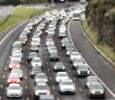 An article in yesterday's Herald Sun newspaper pointed to a sleight of hand by the North East Link Project in its recent appearance before the North East Link Inquiry and Advisory Committee. (See https://www.heraldsun.com.au/leader/inner-east/golfers-tee-off-at-controversial-proposal-either-reduce-or-alter-freeway-golf-course/news-story/386681c74b5e0151a62c2107f2943f78 - this article is hidden behind a Herald-Sun paywall. - Ed).
An article in yesterday's Herald Sun newspaper pointed to a sleight of hand by the North East Link Project in its recent appearance before the North East Link Inquiry and Advisory Committee. (See https://www.heraldsun.com.au/leader/inner-east/golfers-tee-off-at-controversial-proposal-either-reduce-or-alter-freeway-golf-course/news-story/386681c74b5e0151a62c2107f2943f78 - this article is hidden behind a Herald-Sun paywall. - Ed). 
 Please consider attending the PEN Sydney annual Day of the Imprisoned Writer event 15/11/19. This year, Quentin Dempster will interview Jennifer Robinson, counsel to Julian Assange and WikiLeaks.
Please consider attending the PEN Sydney annual Day of the Imprisoned Writer event 15/11/19. This year, Quentin Dempster will interview Jennifer Robinson, counsel to Julian Assange and WikiLeaks. 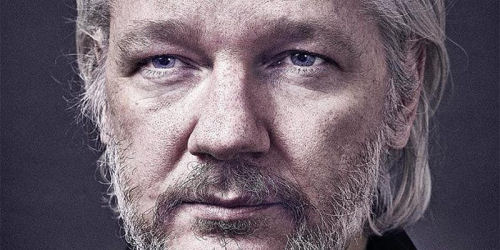

 If I could tell my father what has happened in the years
If I could tell my father what has happened in the years
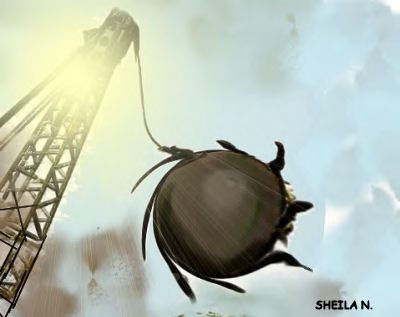
 The 100 years from 1870 is described as the innovation century in which there more more inventions, starting coincidentally with the light bulb, than in the rest of mankind's history. For the most part their roll-out into society was slow enough to dampen the impact of the invention. Electricity, for instance, wasn't connected fully in Australia until 1989. But for me, one event stood out, and that occurred on the 4th of October 1957, just before my birthday.
The 100 years from 1870 is described as the innovation century in which there more more inventions, starting coincidentally with the light bulb, than in the rest of mankind's history. For the most part their roll-out into society was slow enough to dampen the impact of the invention. Electricity, for instance, wasn't connected fully in Australia until 1989. But for me, one event stood out, and that occurred on the 4th of October 1957, just before my birthday.
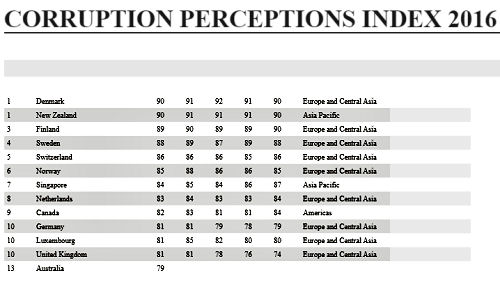
 Apex marine predators choose whom they hang with, researchers reveal. White sharks form communities, researchers have revealed. Although normally solitary predators, white sharks (Carcharodon carcharias) gather in large numbers at certain times of year in order to feast on baby seals.
Apex marine predators choose whom they hang with, researchers reveal. White sharks form communities, researchers have revealed. Although normally solitary predators, white sharks (Carcharodon carcharias) gather in large numbers at certain times of year in order to feast on baby seals.
 This is a call for volunteers to help with organising committees for 50th Anniversary of Vietnam Moratorium Campaign towards the celebration of 50 years on from the Vietnam Moratorium Campaign or offers of memorabilia from that campaign for display.
This is a call for volunteers to help with organising committees for 50th Anniversary of Vietnam Moratorium Campaign towards the celebration of 50 years on from the Vietnam Moratorium Campaign or offers of memorabilia from that campaign for display.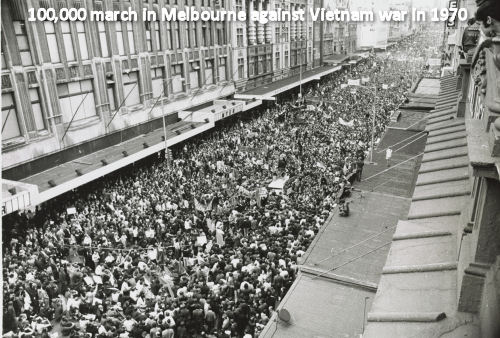

 Rapid population growth has impacted heavily on private and public open space in Melbourne, especially over the last decade. Clifford will discuss some individual case studies and his Private Members' Bill to reintroduce local democracy into Victoria's planning law. Hear him at the Protectors of Public Lands AGM Saturday October 26th, 2019, 2.30pm. Flemington Community Centre, 25 Mt. Alexander Road, Flemington. All welcome!
Rapid population growth has impacted heavily on private and public open space in Melbourne, especially over the last decade. Clifford will discuss some individual case studies and his Private Members' Bill to reintroduce local democracy into Victoria's planning law. Hear him at the Protectors of Public Lands AGM Saturday October 26th, 2019, 2.30pm. Flemington Community Centre, 25 Mt. Alexander Road, Flemington. All welcome!


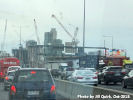 Clifford Hayes, MP., of Sustainable Australia Party, asked Mr Jennings MP (Leader of the Government) to investigate selling public spaces to local governments at a nominal amount, given that population growth is driving ongoing decline in open space per capita in Melbourne. Mr Jennings' 'nothing to see here' response smacks disingenuously of avoiding the obvious context of the government's massive population growth-engineering and overdevelopment, which is driving an accelerated reduction in space and all kinds of ammenities, as well as democracy.
Clifford Hayes, MP., of Sustainable Australia Party, asked Mr Jennings MP (Leader of the Government) to investigate selling public spaces to local governments at a nominal amount, given that population growth is driving ongoing decline in open space per capita in Melbourne. Mr Jennings' 'nothing to see here' response smacks disingenuously of avoiding the obvious context of the government's massive population growth-engineering and overdevelopment, which is driving an accelerated reduction in space and all kinds of ammenities, as well as democracy.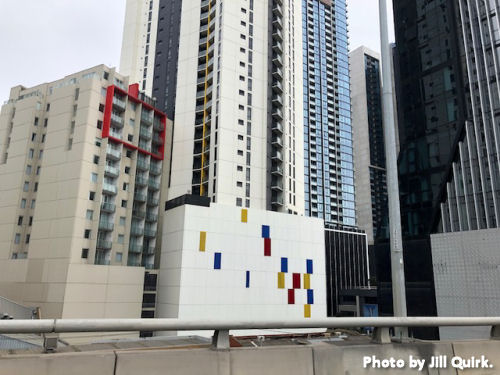
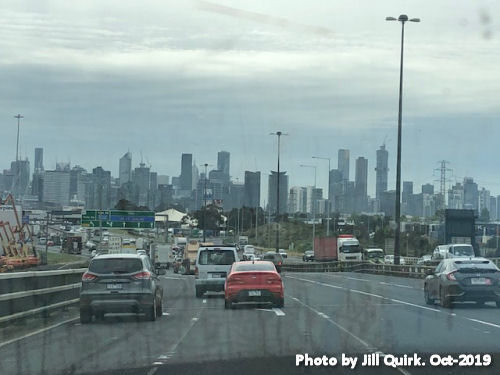
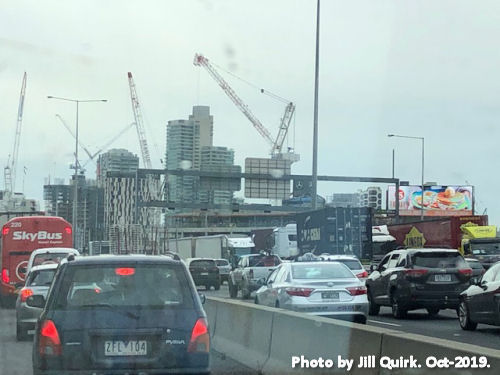

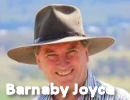
 Two Australian MPs - Barnaby Joyce and Andrew Wilkie - are at last trying to do something to get our government to help Julian Assange, who is currently at the mercy of the British establishment, which threatens to hand him over to a secret trial in the United States. See,
Two Australian MPs - Barnaby Joyce and Andrew Wilkie - are at last trying to do something to get our government to help Julian Assange, who is currently at the mercy of the British establishment, which threatens to hand him over to a secret trial in the United States. See,  The US has illegally occupied the north of Syria for some time, using Kurds to fight ISIS. Donald Trump's withdrawal of US troops has permitted Turkey to invade the area. Understandably terrified, the Kurds have approached the Syrian Government for help. The Syrian Government has responded and Kurds have welcomed the Syrian Arab Army into the area for the first time in years. This should reveal to the world that the Syrian Government is trusted by its people - for most Kurds in Syria are Syrian.[1] Did most Kurds in Syria ever really want independence from Syria, or were we looking at a situation were the United States and NATO encouraged the ambitions of a few Kurds, without asking the rest? Russia has asked all foreign troops to leave Syria and has volunteered to leave itself, if the Syrian Government which invited its help, asks it to leave.
The US has illegally occupied the north of Syria for some time, using Kurds to fight ISIS. Donald Trump's withdrawal of US troops has permitted Turkey to invade the area. Understandably terrified, the Kurds have approached the Syrian Government for help. The Syrian Government has responded and Kurds have welcomed the Syrian Arab Army into the area for the first time in years. This should reveal to the world that the Syrian Government is trusted by its people - for most Kurds in Syria are Syrian.[1] Did most Kurds in Syria ever really want independence from Syria, or were we looking at a situation were the United States and NATO encouraged the ambitions of a few Kurds, without asking the rest? Russia has asked all foreign troops to leave Syria and has volunteered to leave itself, if the Syrian Government which invited its help, asks it to leave.  The Council motion is for Seaford Foreshore Activation - does that mean activation for development? Is it seen as an 'idle' asset - not useful or valuable as it is? It would seem so. As the proposal being put to Council is as follows
The Council motion is for Seaford Foreshore Activation - does that mean activation for development? Is it seen as an 'idle' asset - not useful or valuable as it is? It would seem so. As the proposal being put to Council is as follows
 The discussion in this video opens up new topics on the confusing situation with US 'withdrawal' and Turkey incursion in Northern Syria. Particularly interesting is Marwa Osman's framing of why Turkey would want to move Syrian refugees into Northern Syria. She thinks that Erdogan (Turkey's President) has a problem with all the Syrian refugees living in his country because his people resent the presence of this large number of non-Turkish people. If Erdogan can move these refugees into an area he is trying to clear of Kurds in northern Syria, then he can put the Syrian refugees there. Many of those refugees now have Turkish papers. This would have the further benefit for Erdogan's purposes in that, once Erdogan will have moved so many people there, he will more or less control the area with their presence, since he will be organising their settlement and deployment. Video discussion with Ammar Qaqqaf, Marwa Osman, Mike Raddie and Peter Lavelle.
The discussion in this video opens up new topics on the confusing situation with US 'withdrawal' and Turkey incursion in Northern Syria. Particularly interesting is Marwa Osman's framing of why Turkey would want to move Syrian refugees into Northern Syria. She thinks that Erdogan (Turkey's President) has a problem with all the Syrian refugees living in his country because his people resent the presence of this large number of non-Turkish people. If Erdogan can move these refugees into an area he is trying to clear of Kurds in northern Syria, then he can put the Syrian refugees there. Many of those refugees now have Turkish papers. This would have the further benefit for Erdogan's purposes in that, once Erdogan will have moved so many people there, he will more or less control the area with their presence, since he will be organising their settlement and deployment. Video discussion with Ammar Qaqqaf, Marwa Osman, Mike Raddie and Peter Lavelle.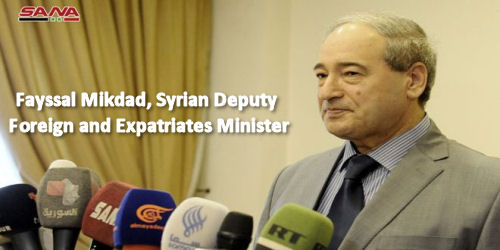
 Hasaka, SANA-The Turkish regime on Thursday went too far in its aggression on Syrian territories in Hasaka, Raqqa and occupied Tal Halaf, penetrated into Allouk and Katsho villages in the surroundings of Ras al-Ayn and the Industrial region in the city. Meanwhile, the Turkish aggression targeted a number of villages and towns in the countryside of the two cities, concentrating on infrastructure, and vital utilities like water, electricity, dams, oil facilities and residential neighborhoods, and leaving a number of civilians martyred in addition to a huge destruction in properties and infrastructure.
Hasaka, SANA-The Turkish regime on Thursday went too far in its aggression on Syrian territories in Hasaka, Raqqa and occupied Tal Halaf, penetrated into Allouk and Katsho villages in the surroundings of Ras al-Ayn and the Industrial region in the city. Meanwhile, the Turkish aggression targeted a number of villages and towns in the countryside of the two cities, concentrating on infrastructure, and vital utilities like water, electricity, dams, oil facilities and residential neighborhoods, and leaving a number of civilians martyred in addition to a huge destruction in properties and infrastructure.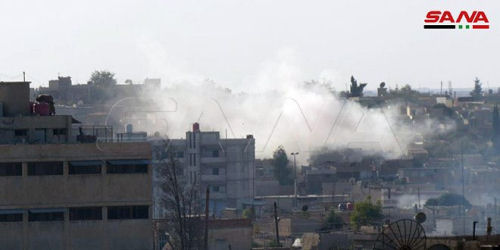
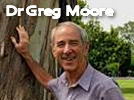 Tree expert Dr. Greg Moore will speak at the Port Phillip Conservation Council Inc. Annual General Meeting on Monday 21st October 2019, 7pm at Longbeach Place,* 15 Chelsea Road, Chelsea (Vic, Australia). Dr. Moore is an engaging and in demand speaker. A botanist and 'plant mechanic' at the University of Melbourne, Greg’s research interests are in horticultural science, revegetation and ecology, specializing in arboriculture. His passion for trees is centred around understanding how trees cope with their environment and promoting the benefits trees provide in urban spaces.
Tree expert Dr. Greg Moore will speak at the Port Phillip Conservation Council Inc. Annual General Meeting on Monday 21st October 2019, 7pm at Longbeach Place,* 15 Chelsea Road, Chelsea (Vic, Australia). Dr. Moore is an engaging and in demand speaker. A botanist and 'plant mechanic' at the University of Melbourne, Greg’s research interests are in horticultural science, revegetation and ecology, specializing in arboriculture. His passion for trees is centred around understanding how trees cope with their environment and promoting the benefits trees provide in urban spaces.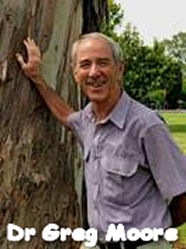

 “This is where we have got to with government-engineered breakneck population growth that also puts property developers and associated professions in charge of planning. 110 golf-courses, which occupy green, treed spaces, in all kinds of areas in Melbourne and its suburbs and another 374 in Victorian regions, now carry hugely increased potential resale value if speculators can get them rezoned for more intensive use. Predictably, golf-course owners and probably management committees are now complaining that they aren’t making enough money. Some of their complaints will be well-founded, because state-imposed population pressure has caused demand for land, water and power, hence their costs, to rise rapidly. If nothing is done, either to reduce population growth, or exempt golf-courses from paying these charges, they will skyrocket.” (Sheila Newman, Population, environment and land-tenure systems sociologist.)
“This is where we have got to with government-engineered breakneck population growth that also puts property developers and associated professions in charge of planning. 110 golf-courses, which occupy green, treed spaces, in all kinds of areas in Melbourne and its suburbs and another 374 in Victorian regions, now carry hugely increased potential resale value if speculators can get them rezoned for more intensive use. Predictably, golf-course owners and probably management committees are now complaining that they aren’t making enough money. Some of their complaints will be well-founded, because state-imposed population pressure has caused demand for land, water and power, hence their costs, to rise rapidly. If nothing is done, either to reduce population growth, or exempt golf-courses from paying these charges, they will skyrocket.” (Sheila Newman, Population, environment and land-tenure systems sociologist.)
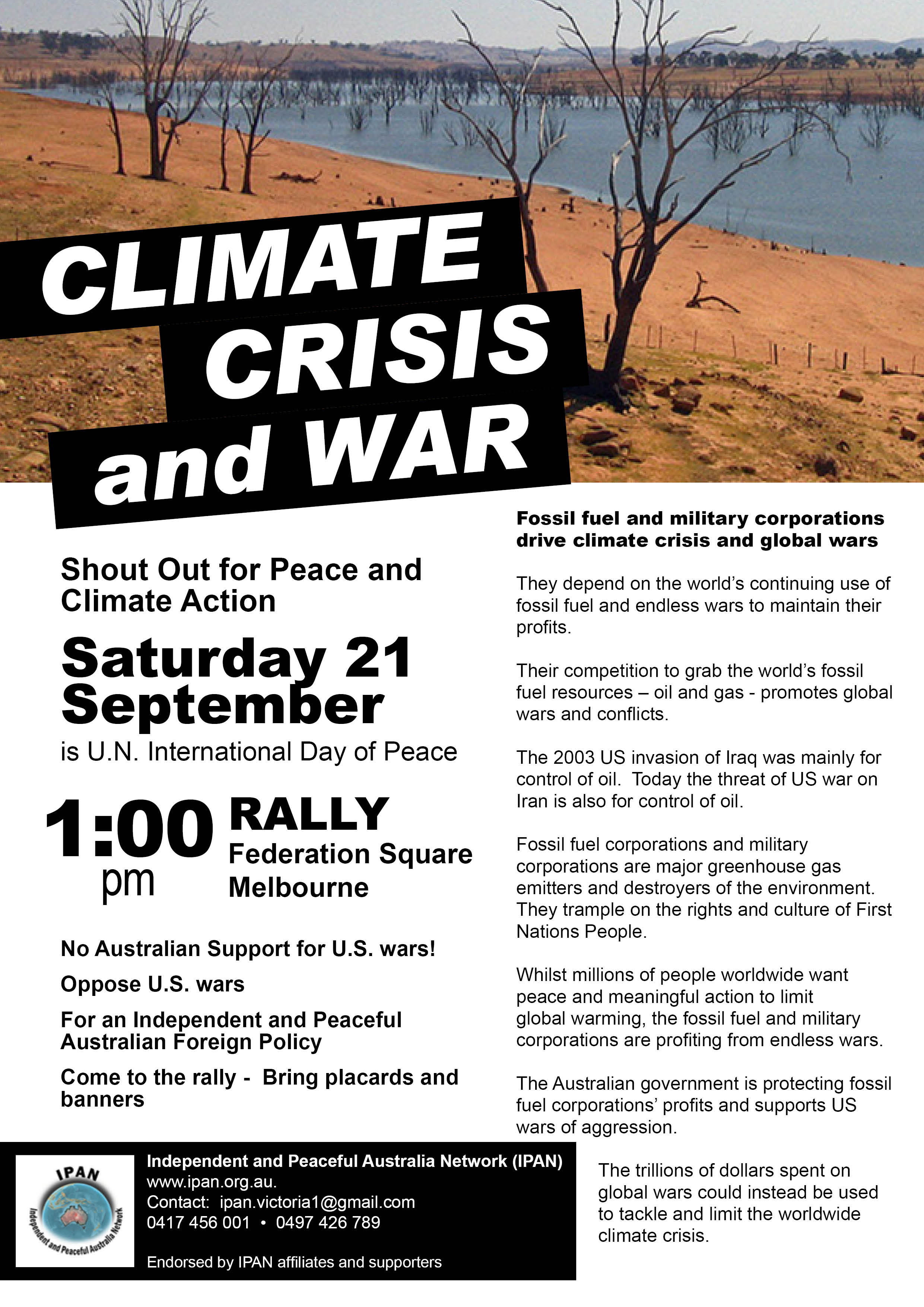
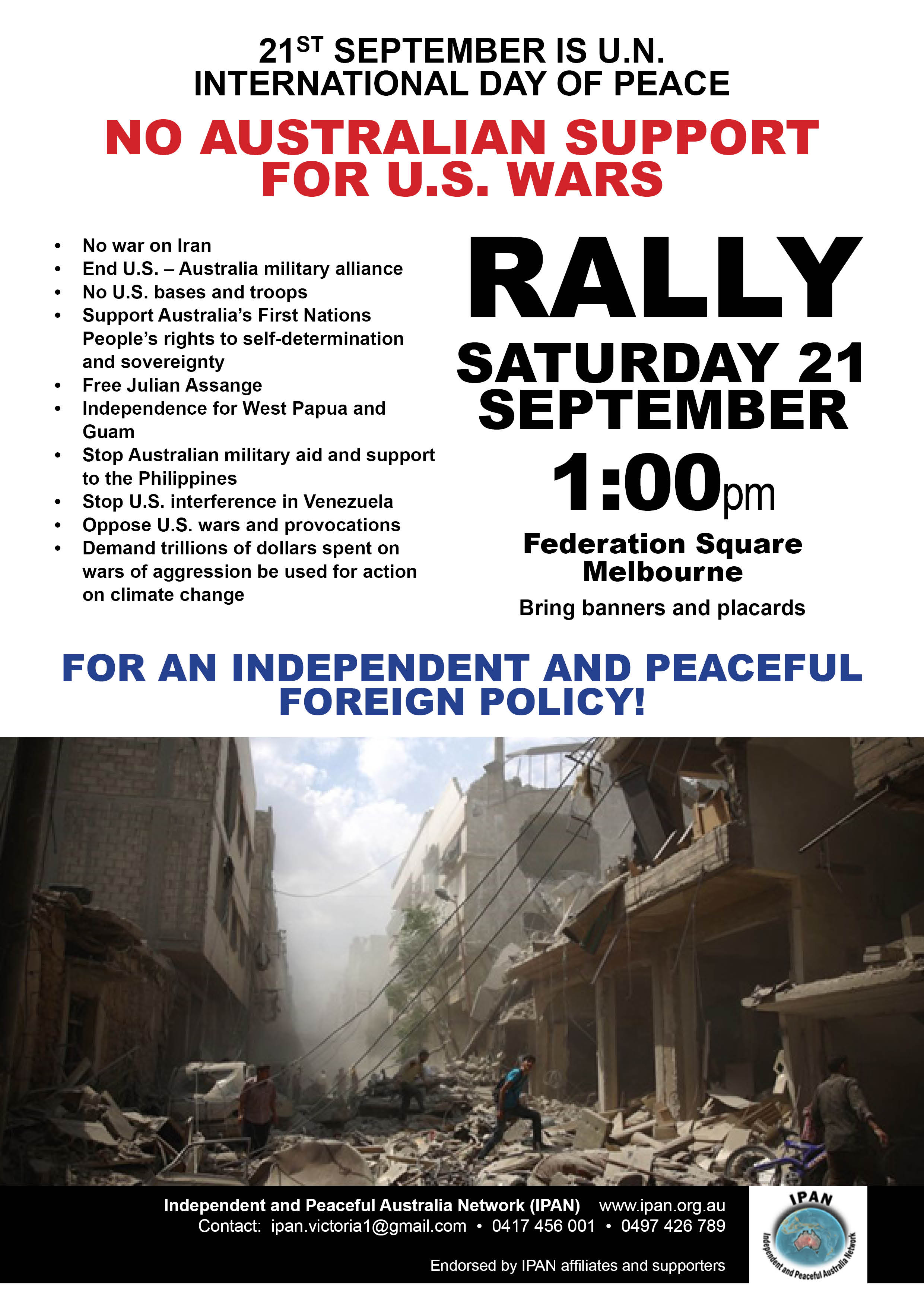
 "The greatest threat to our environment is not carbon dioxide but unsustainable immigration. As the son of a farmer, I was taught from a young age about carrying capacity and never to overstock your paddocks. Yet immigration is doing just that, causing major city congestion and overdevelopment on our city fringes. Meanwhile, regional communities are struggling as opportunities, from the lack of infrastructure, go begging. While I agree with the government's wind-back of permanent visa places to 160,000 annually, the almost two million temporary visa holders living in Australia should also be reduced." "All war is a failure of diplomacy. The current military intervention in the Middle East has lasted almost as long as World War I, World War II and the Vietnam War combined. It has gone on for too long and needs to end. Bin Laden is dead, Saddam is dead and there are no weapons of mass destruction in Iraq. ISIS will only be defeated when the world calls out the Milo Minderbinder who is funding them."
"The greatest threat to our environment is not carbon dioxide but unsustainable immigration. As the son of a farmer, I was taught from a young age about carrying capacity and never to overstock your paddocks. Yet immigration is doing just that, causing major city congestion and overdevelopment on our city fringes. Meanwhile, regional communities are struggling as opportunities, from the lack of infrastructure, go begging. While I agree with the government's wind-back of permanent visa places to 160,000 annually, the almost two million temporary visa holders living in Australia should also be reduced." "All war is a failure of diplomacy. The current military intervention in the Middle East has lasted almost as long as World War I, World War II and the Vietnam War combined. It has gone on for too long and needs to end. Bin Laden is dead, Saddam is dead and there are no weapons of mass destruction in Iraq. ISIS will only be defeated when the world calls out the Milo Minderbinder who is funding them." Since 2005 the Reclaim the Radical Spirit of the Eureka Rebellion Celebrations Committee has awarded six Eureka Australia Medals (EAM) at Bakery Hill, Ballarat (the site where the Eureka Oath was taken) on Eureka Day, 3rd December.
Since 2005 the Reclaim the Radical Spirit of the Eureka Rebellion Celebrations Committee has awarded six Eureka Australia Medals (EAM) at Bakery Hill, Ballarat (the site where the Eureka Oath was taken) on Eureka Day, 3rd December. This is the second in a series of interviews with Nerrida Pohl about lack of proper regulation of the construction and development industry in Australia. Nerrida talks about the 30 story appartment building in Victoria, where she bought two appartments 'off the plan'. The building is a shared commercial/private one, that is meant to share one plan, but Nerrida has discovered with some amazement that there are actually two different plans. Although the Victorian Civil and Administrative Tribunal (VCAT) ruled, in a dispute between the developer and Stonington Council, that residents would share the building's loading bay with commercial occupants, this right was sold off by a member of the building management for $1.00 per annum peppercorn rent. This has meant that moving vans park at the front entrance, causing traffic problems in a very busy area. The front doors are propped open so that furniture etc can be brought into the building, creating a security risk. Furthermore, the ''Residents Meeting Room' specified in the plan, has been occupied by a real-estate agency. This means that residents have no formal or designated place to meet, communicate, and organise for their own benefit. It is especially hard because many appartment owners dwell overseas and cannot easily be contacted by other owners who, when they ask, are only given overseas mailing addresses, which might be PO boxes or legal firms in distant cities.
This is the second in a series of interviews with Nerrida Pohl about lack of proper regulation of the construction and development industry in Australia. Nerrida talks about the 30 story appartment building in Victoria, where she bought two appartments 'off the plan'. The building is a shared commercial/private one, that is meant to share one plan, but Nerrida has discovered with some amazement that there are actually two different plans. Although the Victorian Civil and Administrative Tribunal (VCAT) ruled, in a dispute between the developer and Stonington Council, that residents would share the building's loading bay with commercial occupants, this right was sold off by a member of the building management for $1.00 per annum peppercorn rent. This has meant that moving vans park at the front entrance, causing traffic problems in a very busy area. The front doors are propped open so that furniture etc can be brought into the building, creating a security risk. Furthermore, the ''Residents Meeting Room' specified in the plan, has been occupied by a real-estate agency. This means that residents have no formal or designated place to meet, communicate, and organise for their own benefit. It is especially hard because many appartment owners dwell overseas and cannot easily be contacted by other owners who, when they ask, are only given overseas mailing addresses, which might be PO boxes or legal firms in distant cities.
Recent comments